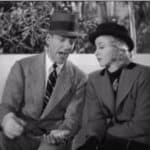Email marketing can be one of the most powerful lead-conversion tools in your marketing arsenal.
Unfortunately, more often than not email marketing is done carelessly and quickly turns into nothing more than spam in your prospect’s inboxes.
Professional marketers have some secrets that can help you – here are those secrets in a way you can use.
Good email marketing evolves over time, all the marketing knowledge in the world isn’t going to serve up a perfectly performing email marketing campaign on the first try. It takes a testing approach, and an acute awareness of your buyer persona (the demographic of people most likely to buy from you) and how they react to your email content.
- Start with the right list
- Nurture new leads straight-away.
- Target the Decision-Making-Unit.
- Segment your lists
- Find the optimum time to send your email
- Make them miss you with lower frequency
- Know a good open-rate when you see one!
- Know the best practices for a good open-rate
- Measure Engagement Beyond Open Rates
- Know what makes a good subject line
- What is a good CTA click-through-rate?
- Understand the factors that increase click-through-rates
- Write for your audience
- Focus your CTA
- Leverage Behavioural Triggers for Automation
Start with the right list
Strictly speaking, list building (acquiring a list of names and email addresses of people who are likely to be interested in your product) is the stage that comes before email marketing. Email marketing is typically used for nurturing existing leads.
Acquiring email addresses can be done in many different ways.
Buy An Email List
Some businesses choose to purchase lists but there are problems with this approach.
- It may not be legal in your country
- It’s not ethical in any country
- It can be expensive
- The purchased list may not include people with your target buyer personas
- Data quality can often be poor
List Building Via Content Upgrades
An effective method to build email lists is to exchange valued resources (Content Upgrade) for visitor contact details using a Call-to-Action buttons and web form that enables you to collect names and email addresses.
The resources must valuable but the options are virtually unlimited:
- Calculators and tools
- Worksheets
- How-To documents
- Plans
- Resources lists, e.g. Podcasts to listen to, books to read, etc
- etc
List Building Via LinkedIn
LinkedIn is THE place to find the people that might be the right contacts for your B2B email campaigns.
Start by identifying key decision-makers or prospects within your target companies. Use LinkedIn’s search filters to narrow down your ideal customer profile (ICP) based on job titles, industries, or company sizes.
Once you’ve identified the right profiles, check their “Contact Info” section—some users list their email addresses directly here. If not, you can send a personalised connection request and politely ask for their email address once they accept.
There are also browser based tools that find email addresses for specific LinkedIn profiles and load them to your CRM.
Nurture new leads straight-away.
Once you have these contacts, you should start sending them emails straight-away. They will likely forget you if you wait more than a week.
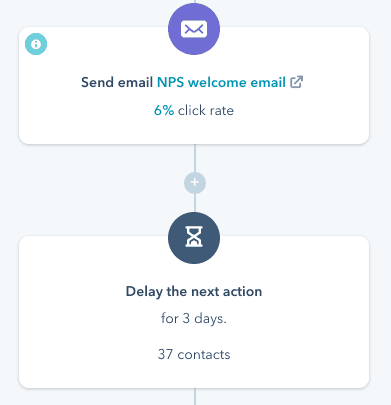
Best practice is to send new contacts an email to them as soon as they give you their email address. In your first email, you can:
- Thank them for the contact details
- Ask if they are happy with the valued resource they received
- Give them some insight into the value they can expect to receive in future emails from you
From then on, you’ll need to start gathering data from these contacts. Based on their interaction with your emails, you can determine where they are in their buyer’s journey and how interested they are in your products.
The key to lead nurturing is to provide value and information, not to sell.
Target the Decision-Making-Unit.

It is important that you have a couple of buyer personas prepared before you start writing out your emails.
Decisions in B2B businesses are typically made by small groups of people, instead of just one decision maker. Therefore, while you should target the main decision-maker, you should make the language of your emails applicable to the majority, if not all, of the people within the decision making unit of a company.
As an example, if you are selling Software-as-a-Service, you may need to target the CTO as the main decision maker, but you should ensure your email campaigns do not alienate the DBA and IT Manager.
Segment your lists
To help you target emails to the different members of the decision-making unit, you can segment your list according to job titles as well as the stages in the buyer’s journey. You may also find that the product or service you are selling can be segmented further based on pain-points, business goals and more.
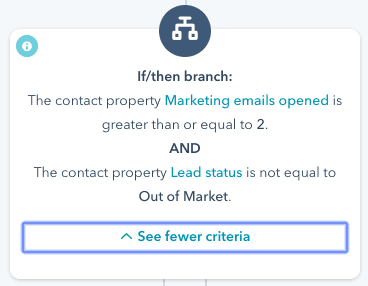
You can then create emails for your email campaign that target specific segments of your main list.
Writing decision specific emails and sending them out to your list periodically can give you an idea as to who on your list is interested in which areas of your business. Monitor click-through-rates and build your email campaigns to react to any actions that your prospects take with your emails to get a clearer understanding of your buyer persona.
Find the optimum time to send your email
When it comes to B2B email marketing, the answer to this is a lot simpler than B2C. The ideal contact will provide you with a business email address, which in most cases will be checked most frequently during working hours. So you have an 8 hour window to send: when is the best time to increase open rates?
Most professional inboxes are checked first thing in the morning, so 8am to 9:30am is a pretty good bet. BUT, and this is a pretty big but here. This still requires testing as there are other key times of the day when email checking is likely and when you might have less competition.
- After lunch – when people return to their desks to check on progress and any new notifications
- An hour before COB – when people check they haven’t missed anything before leaving the office
Once you have established which time receives the highest open rates for your buyer persona, you can then start timing most, if not all your emails to go out at that time.
Make them miss you with lower frequency
What’s critical here is to not send too many, as this will cause people on your mailing list to unsubscribe at a higher rate. Once this happens, sending any further marketing emails to unsubscribed contacts becomes questionable. A typical and healthy unsubscribe rate is 0.5% and less. A percentage higher than this warrants a re-evaluation of your sending schedule.
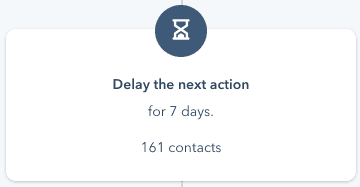
When it comes to regular updates, once a week is the most frequent, any more than that and you risk being treated as spam. In addition, coming up with content more than once a week is going to be challenging. Even if you do manage it, the content is likely to reduce in quality.
An update every 2 to 3 weeks is still acceptable. It really comes down to quality over quantity of content.
There are exceptions to this. If there is a time sensitive event occurring, e.g. a conference or a webinar. You may wish to send reminders the day before the event and the day of the event. But that’s only to people who have a demonstrated interest in the event.
Know a good open-rate when you see one!
The open rate is the percentage of emails that are successfully sent which are then opened. So if 5% of your list don’t receive the emails, perhaps because their inboxes are full, the open rate will not take these people into account.
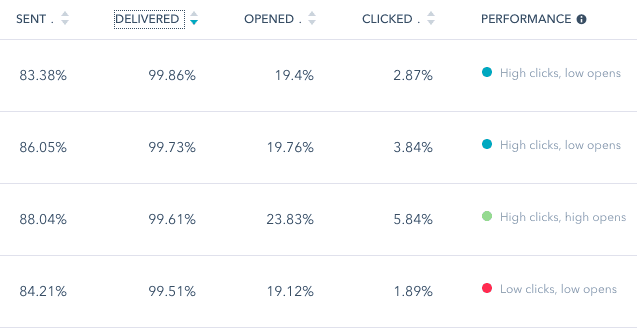
Anything over 20% can be considered a good open rate. One exception is welcome emails which can get over 50% and possibly more if the email contains information that is necessary to the contact.
Know the best practices for a good open-rate
There are many contributing factors to email open rates, including the reputation of your company as a sage in your field. This is a massive topic in itself so let’s just focus on more tactical factors that are within your immediate control.
- Subject line language: make it concise and punchy, but not salesy
- Subject line length: Subject lines that are too long will be cut off, and even if they aren’t cut off, long subject lines don’t tend to do as well as those that are around 5 words.
- Purpose of the email: Generally, the more helpful the email and less salesy the email, the more likely it is to be opened.
- Frequency of emails
- Time sent
- From Name: Use real people, e.g. john@business.com, not departmental addresses, e.g. reception@business.com
- Re-validate email addresses that have not be used recently: verify email addresses that may not have been used in a while to keep your bounce rates low.
- To Name: Again use real people addresses not departmental address. If your contact is a department email address, it usually means there isn’t a single person responsible for that inbox so personalising the content is more tricky. Emails will have to be generic and are therefore, less likely to be opened.
Measure Engagement Beyond Open Rates
Yes, open rates can be useful metric but modern email systems make them unreliable at best so look at other metrics as well:
- Click-to-Open Rate (CTOR): This measures the percentage of recipients who clicked on a link after opening the email. A high CTOR indicates that your content and CTA are resonating.
- Engagement Over Time: Track how recipients interact with your emails over weeks or months. Are they consistently engaging, or do they drop off after a few emails?
- Heatmaps: Use tools to analyse which parts of your email attract the most attention. This can help you refine your layout and optimize CTA placement.
Know what makes a good subject line
Subject lines are important to the success of your email campaign so do some research into what your competitors are using and come up with a few before deciding on one. It might even be worth A/B testing different subject lines if you’re running a long-term email campaign.
The psychology of marketing has changed and now the more salesy your content sounds the less likely it is to work on your prospect, and this applies for subject lines just as much as blogs and service pages.
What is a good CTA click-through-rate?
A Call-to-Action is the main button or link on a page or an email which is the primary requests the reader or visitor to take an action. The text on the button is the requested action, and by clicking on this request, this action is taken. Examples of Call-to-Action text can be ‘Submit’, ‘Register Now’ and ‘Learn More.’
An email with a strong Call-to-Action that leads to high-value piece of content can get a 4% click-through rate. If you are getting below 2% then you’ll need to change it up. Start with changing the CTA, and if your numbers don’t improve, then change the content that the CTA leads to.
Understand the factors that increase click-through-rates
The aim here is to encourage your reader to click away from the email and visit your site. The first thing you want to avoid is scaring them away with sales tactics so the theme of adding value holds strong in this case.
CTA’s that offer education and high-value information get more clicks than CTA’s requesting or demanding a purchase. So try ‘Find out more’ instead of ‘Buy Now.’
Write for your audience
Small-to-medium businesses have an advantage over the larger corporations when it comes to email marketing. The personal touch adds a lot more impact in writing language and relationship building with prospects.
The ability to be more human in your emails works in your favour, so add some personality and even humour, if appropriate. By sounding more personable, your emails move further away from sounding like marketing and sales.
Focus your CTA
Try to stick to one main CTA in your email. It doesn’t have to be a button, it can just be a hyperlink reading ‘Learn more.’
This doesn’t include any other clickable areas on the email such as your signature, social buttons, your website address and your hero image if you have one. It’s important to have all of these other clickable features in your email so that there are options for your readers to learn and share more about your business.
Just make sure that your main CTA stands out and that the design and literary structure of your email guides your readers to the main CTA.
Leverage Behavioural Triggers for Automation
Modern CRMs and marketing automation system have made it easy to leverage behavioural triggers. By setting up automated emails based on specific actions taken by your prospects, e.g. such as downloading a whitepaper, visiting a pricing page, or abandoning a cart, you can deliver highly relevant content at the right time.
For example:
- If someone downloads an eBook, follow up with an email offering a related case study or webinar.
- If a prospect visits your pricing page but doesn’t convert, send an email addressing common objections or offering a free consultation.
The key is to use these triggers to nurture leads without being intrusive. Keep the tone helpful and value-driven, ensuring recipients feel supported rather than pressured.
Don’t, whatever you do, go to the hard sell immediately. Let them get to know and trust you first.

